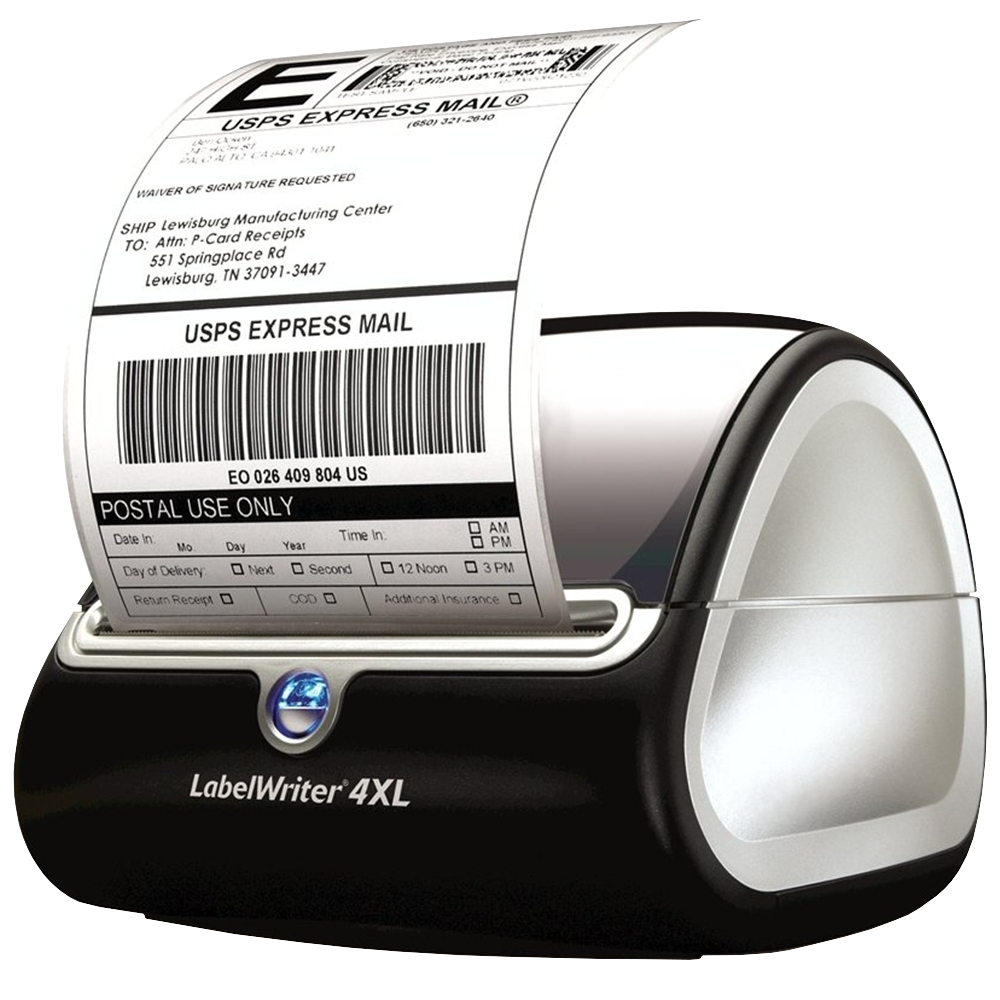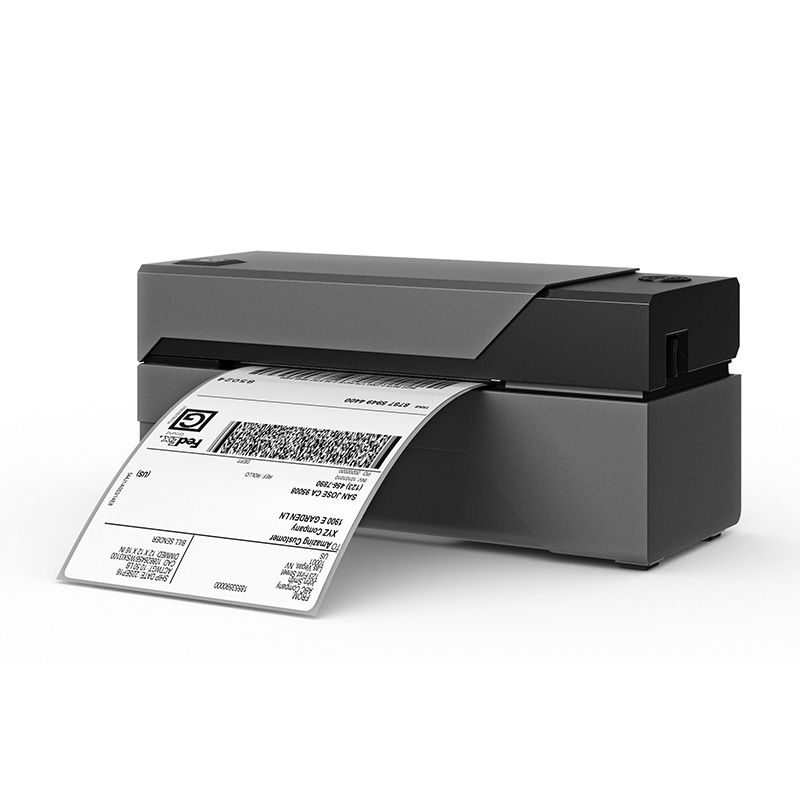You have started your e-commerce business recently, or you are at the point where you are looking to grow your current business. You already have a well-designed online store up and running, and you have selected the best carriers to ship your orders. Last but not least, you utilise a cloud-based shipping management platform that connects your e-commerce store with these carriers to automate shipping labels generation. The next self-evident step is to invest on a shipping label printer. But why do you need a dedicated label printer for shipping and what difference will it make compared to the all-in-one printer set-up you already have?

Why you need a label printer for shipping
Numerous small day-to-day things end up having a significant impact on running a successful e-commerce business. All that information printed on a small piece of paper that ensures your package arrives at its destination is undeniably one of them. For if it fails to do so, that will lead to customer dissatisfaction and most probably bad reviews for your e-commerce business.
A label printer is equipped with features designed to make label printing a fast, easy, and cost-efficient process; unlike your current all-in-one printing set-up, they are designed to do one thing and to do it well. A shipping label printer prints labels that are the right size, pre-cut, and ready to stick on your parcel. Moreover, when it comes to parcel shipping, a robust shipping label is essential. A highly-durable, waterproof label which ensures your shipping information stays in place no matter how rough the parcel’s journey has been, is of the utmost importance to guarantee your order stays on track. Dedicated label printers are equipped to print that specific type of shipping labels.
Furthermore, a label printer is much faster and more durable than your all-in-one printer. Obviously, that is entirely dependent on your shipping demands and the scale of your business. If your e-commerce business is still on the small side, maybe you should not spend much on a high-speed, expensive label printer at the moment and invest that money on other areas of your business instead. On the other hand, if you ship a large number of orders every day, having a high-speed, highly-reliable label printer in place will make your fulfilment process way more efficient and save you time and money.
Last but not least, dedicated label printers generate more professional looking shipping labels that will make an excellent impression to your customers and help you stand out of the competition.
Choosing the right shipping label printer
Type
Many label printers are designed to print an extended range of label types, so it is advisable to make sure that the label printer you plan to purchase is designed with shipping label printing in mind.
Resolution
The sharpness of a print is determined by the Dots per Inch (DPI) measure. DPI is a measure of spatial printing; more specifically, the number of individual dots the printer can place in a line within the span of one inch (2.54 cm). Printers with higher DPI produce more precise and detailed output. If the text size on your shipping labels is 10 pt or smaller, or if you are printing barcodes on your labels, a high resolution is essential. In that case, you should aim for at least 300dpi.
Print method
The main print methods professional label printers offer are direct thermal printing and thermal transfer.
Direct thermal printing is a digital printing process which produces a printed image by selectively heating coated thermal paper (also known as thermochromic paper) when it passes over the thermal print head. Thermal-transfer printing is a digital printing method in which ink is applied to paper by melting a coating of ribbon so that it stays glued to the material on which the print is applied.
When it comes to shipping label printing, both methods utilise a thermal print head that applies heat to the surface being marked. In the case of direct thermal printing, heat-sensitive labels are used that blacken where they are heated from the thermal print head. Thermal transfer printing, on the other hand, uses a wax- or resin-based ribbon that transfers ink onto the label when heated by the thermal print head.
Direct thermal printers are printing predominately in black and white and are simpler and cheaper to maintain since there is no need for ribbon replacement. Nevertheless, heat-sensitive labels can be more sensitive to heat, light, and other environmental conditions. Additionally, direct contact with abrasive labels reduces the thermal print head’s life. On the other hand, thermal transfer printers can offer colour printing (with the addition of coloured ribbons) and better image quality and durability.
Connectivity
You can get a range of connectivity options for your label printer. The most common methods are via USB or Ethernet, although several models nowadays offer Wi-Fi, Bluetooth, or near field communication (NFC) options.
Label size
You also need to take into consideration the type and size of shipping labels you will need to print. Be aware of the maximum print width each model provides as well as the label types offered by the manufacturer for the respective label printer.
Here are the shipping label sizes used by different carriers:
· Royal Mail: 4x6-inch
· DPD: 4x6-inch
· FedEx: 4x6-inch
· myHermes: 4x8-1/4-inch
· DHL: 4x8-1/4-inch
· UPS: 4x6-inch & 4x8-1/4-inch
· InPost: 4x6-inch
· TNT: 4x6-inch
Our recommended shipping label printers
Which companies manufacture the best shipping label printers for e-commerce business purposes? After thoroughly reviewing various shipping label printers used in the industry, we came up with a list of the top three companies that produce high-quality, reliable products that will help you streamline your shipping process.
Dymo LabelWriter 4XL

The Dymo LabelWriter 4XL is a direct thermal label printer which is very versatile with quite impressive print speed and allows you to print labels directly from various platforms such as MS Word, Excel, Card Scan, and Outlook.
It is quite similar to its earlier counterparts, Dymo Label Writer 450 Twin Turbo and Dymo LabelWriter 450 that share the same printing speed and software. The main difference is that the Dymo LabelWriter 4XL has a maximum print width of 4.16” (105.71 mm) which makes it an ideal label printer for large 4x6-inch shipping labels.
The device offers 300 dpi resolution that can produce very detailed text, graphics, symbols, and barcodes for your shipping labels. One of Dymo LabelWriter 4XL’s downsides is the absence of an automatic cutter. Nevertheless, the roll tears off quite easily, and even 4-inch-wide shipping labels come off very cleanly.
Specifications:
Interface type
USB
Print Resolution
300 dpi
Print Method
Direct thermal
Printing Speed
81.28 mm per second
Maximum print width
4.16” (105.71 mm)
Operating System
Windows 2000 and XP, Windows Vista, Mac OS 10.3.9 or later, Linux drivers
Dimensions
(W x D x H) 178.80 mm x 185.42 mm x 134.62 mm
Weight
0.91 kg
ROLLO Shipping Label Printer

Rollo is a direct thermal label printer known for its very high printing speed and built quality and offers excellent value for money. It comes with an online shipping solution that works with UPS, USPS, and soon FedEx. Rollo prints wide-format labels, up to 4.16 inches, as well as 4x6-inch shipping labels, barcodes, FBA labels, warehouse labels, and bulk mailing labels.
Additionally, its automatic label identification function allows you to use Rollo with any brand of direct thermal label; by the push of a button, the printer will automatically determine both the weight and type of the label roll.
With a compact and sturdy design, automatic label adjustment, reliable technical support, and a fascinating printing speed of 150mm/sec, Rollo effortlessly outruns the competition. And while the print quality could be better, Rollo is one of the best shipping label printers in its price category.
Specifications
Interface type
USB
Print Resolution
203 dpi
Print Method
Direct thermal
Printing Speed
150 mm per second
Maximum print width
4.1” (104mm)
Operating System
Windows (XP and newer), Mac (10.9 and newer), Linux 64-bit Ubuntu, 64-bit CentOS, Raspberry Pi
Dimensions
(W x D x H) 195.58 mm x 76.2 mm x 83.82 mm
Weight
0.99 kg
Zebra GK420d

The Zebra GK420d direct thermal Printer is an excellent choice for mid-volume, industrial-strength labelling at a relatively low price, although quite bulky and heavier compared to the rest of the label printers reviewed on this article.
In terms of connectivity, the Zebra GK420d supports USB, and it comes with serial and parallel ports for connecting to older hardware. Additionally, you can order one with a factory upgrade that enables Ethernet for an extra cost. The printer also has a built-in sensor that notifies the user when the printer has run out of paper and a diagnostic system that monitors the temperature of the print head and prevents it from overheating. The recommended label rate on the Zebra GK420d is up to 4,000 labels per day.
The Zebra GK420d is a durable, fast shipping label printer that has a competitive price while still offering reliability and several printing options. The company also produces the GK420t model that provides a combination of direct thermal and thermal transfer print methods.
Specifications
Interface type
USB, Serial Port, Parallel Port, and Ethernet (optional)
Print Resolution
203 dpi
Print Method
Direct thermal
Printing Speed
127mm per second
Maximum print width
4.1” (104 mm)
Operating System
Microsoft Windows Vista, Windows 7, Windows 8, Windows 8.1, Windows 2008, Windows 2012, Windows 10
Dimensions
(W x D x H) 171 mm x 210 mm x 152 mm
Weight
1.4 kg
Conclusion
There are loads of high-quality products to choose from when you are on the market for the best shipping label printer for your e-commerce store. With an abundance of products having similar features available nowadays, it is vital to be able to narrow down your choices effectively. The label printers we have included in this guide are three of the most reliable models available on the market these days. But since there is no such thing as the perfect product, each one of them comes with a combination of advantages and disadvantages.
At the end of the day, the only way to ensure you are making the right purchase is to carefully assess your e-commerce business’ printing needs like your overall printing workload, desired print resolution and printing speed, type and size of shipping labels, etc.
No matter which printer you choose to print your shipping labels, using a shipping management platform like Shiptheory that allows access to the world’s best carriers, can offer you the best shipping solutions for your e-commerce business, saving you money and time.